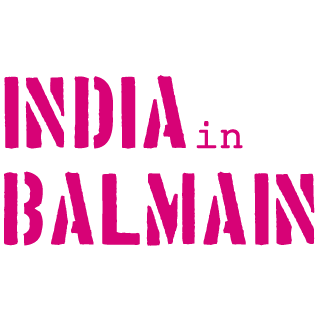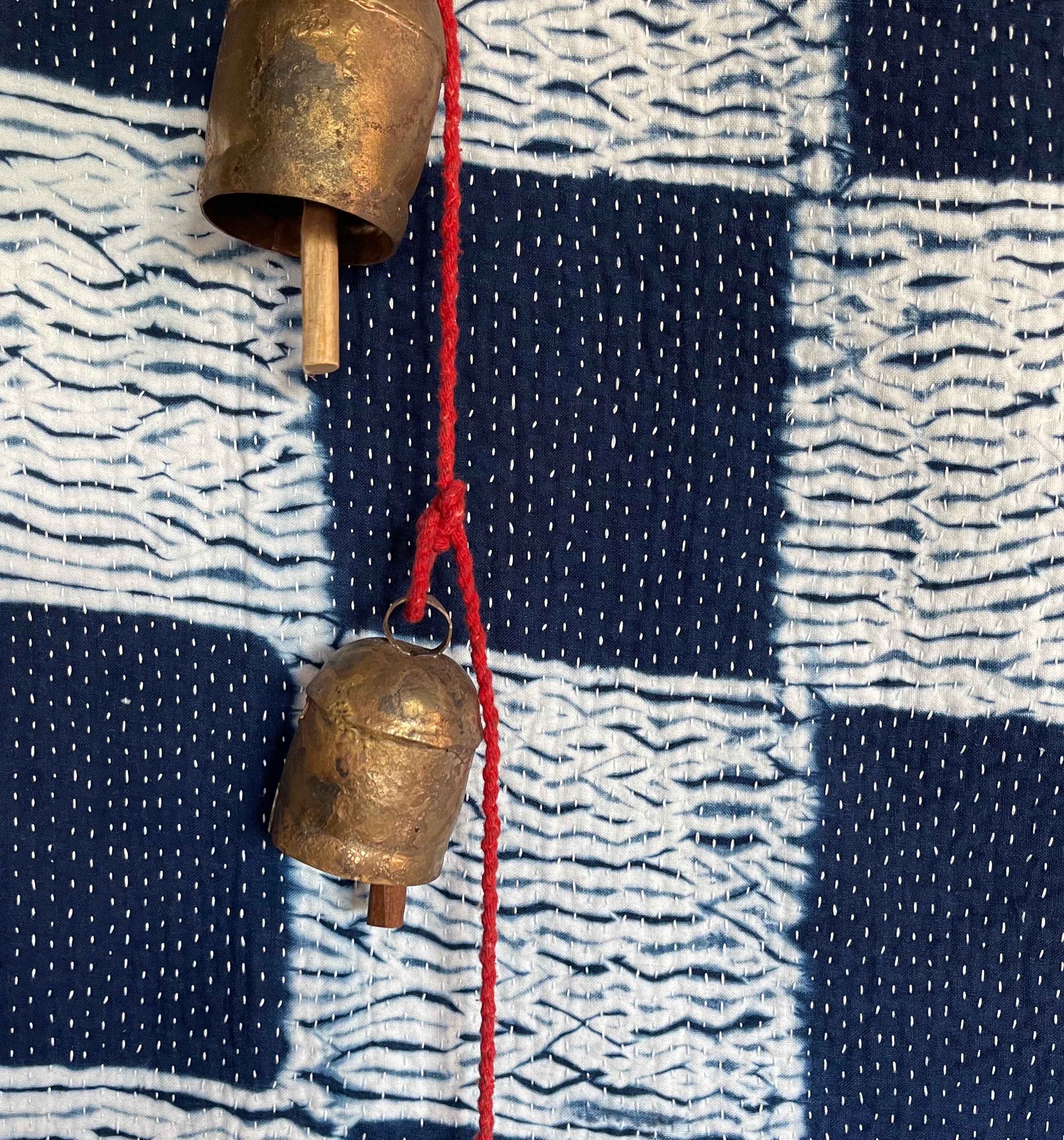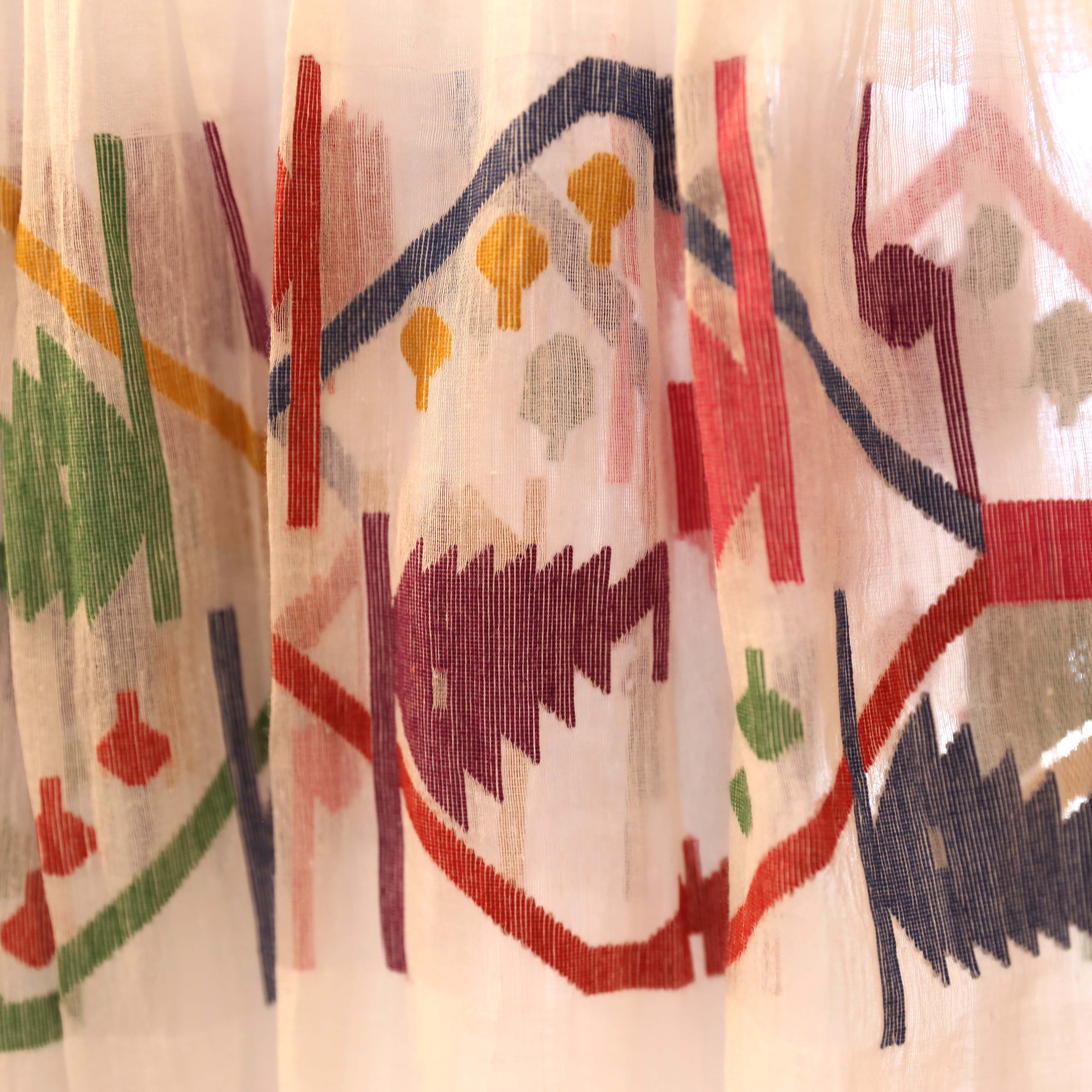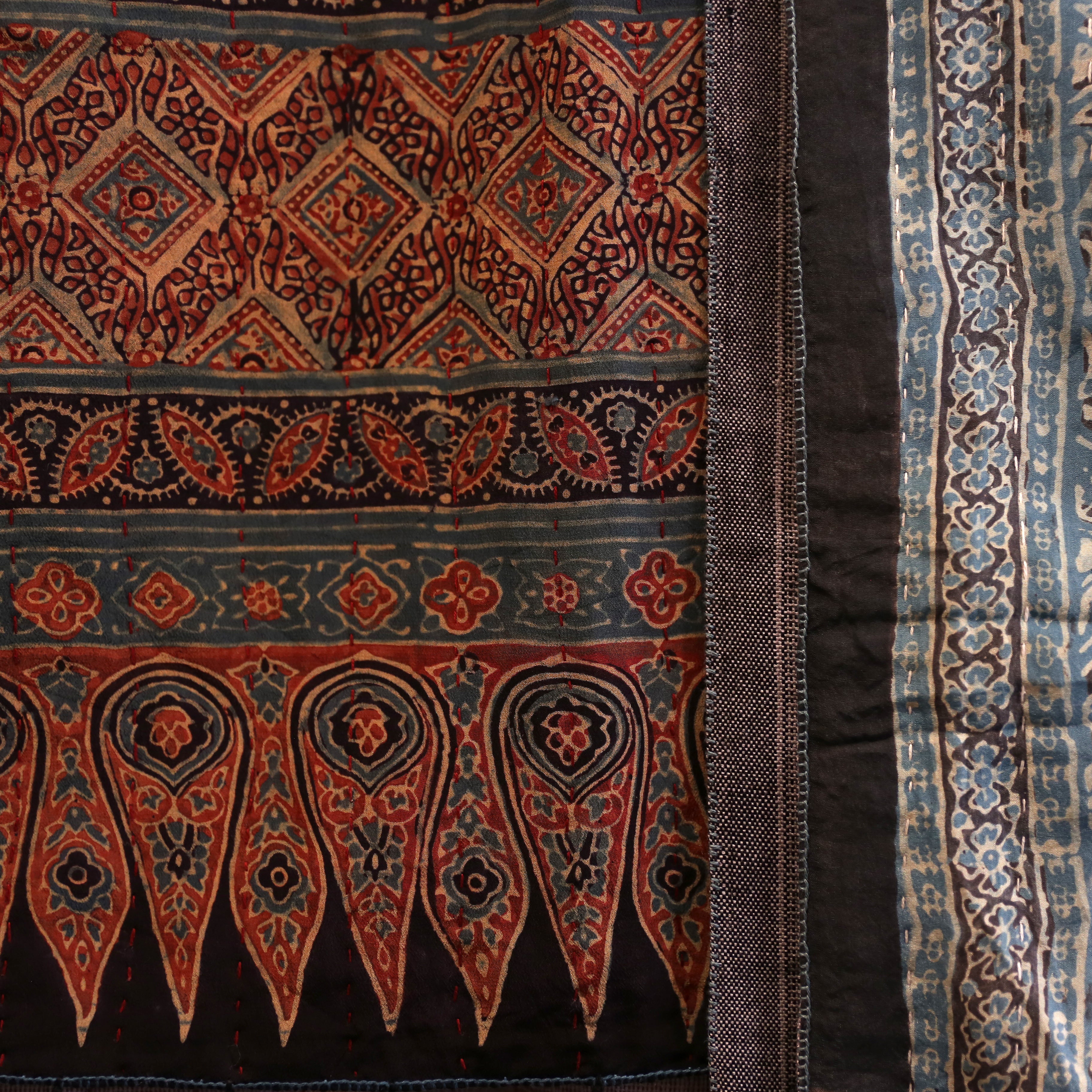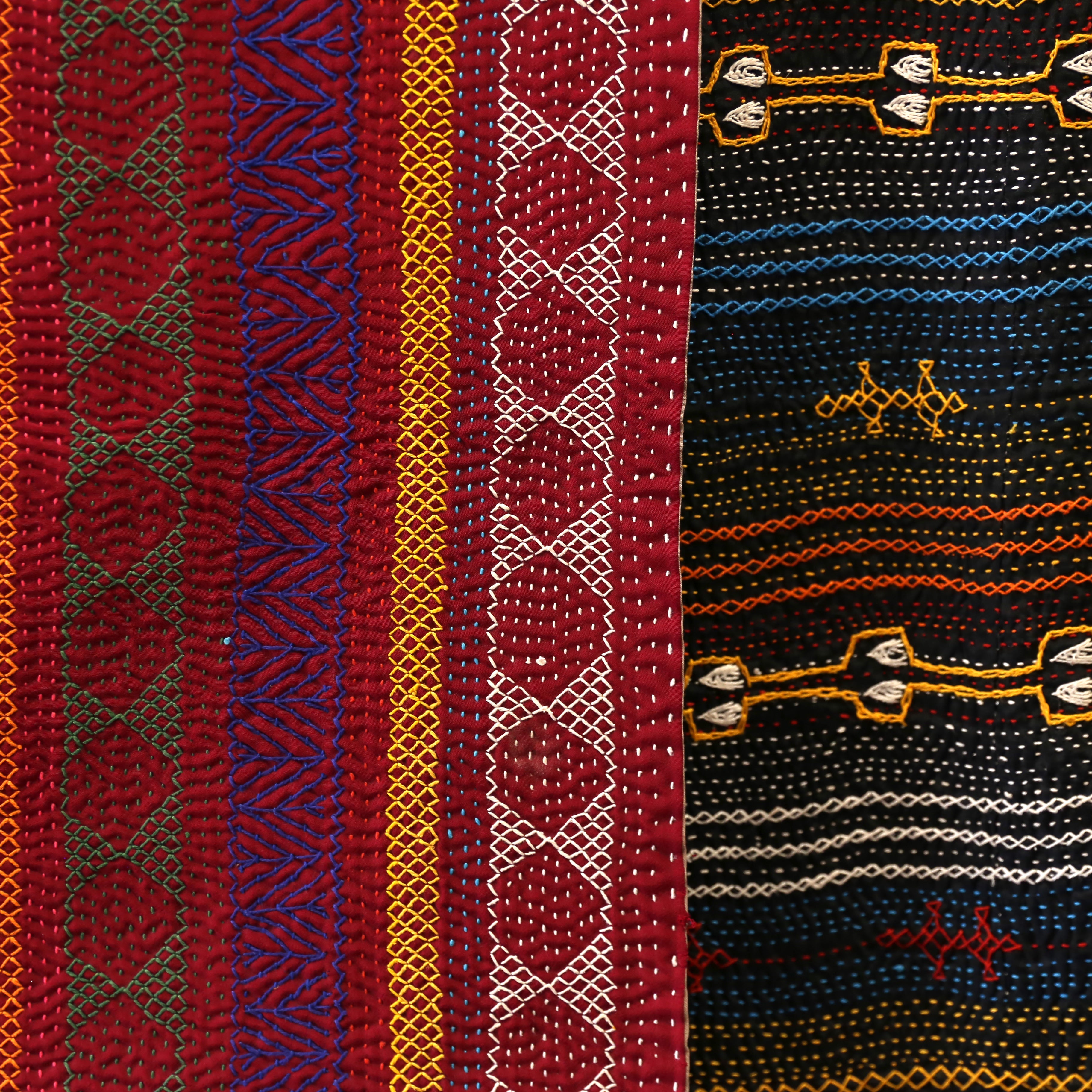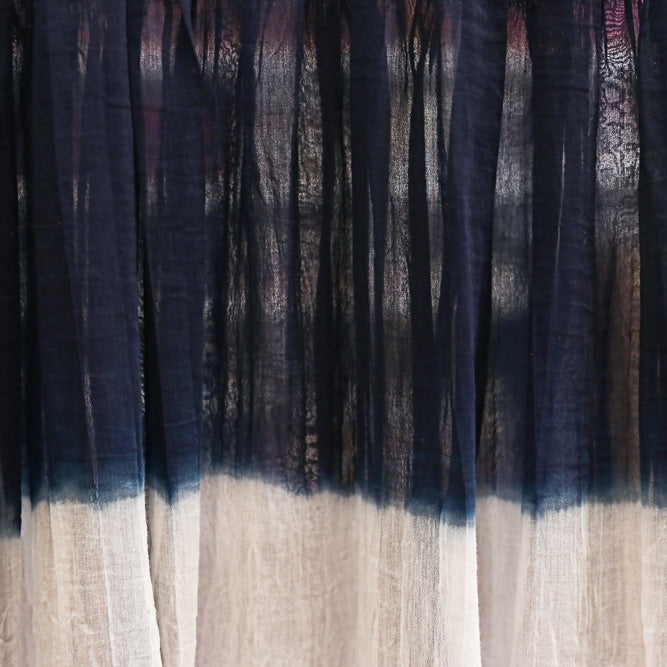Dyed ⋮ Shibori
Shibori is a Japanese dyeing technique, resist stitching, traditionally done using Indigo dye with white cotton fabric to make a distinctive blue and white-patterned cloth.
The term is derived from the Japanese verb shiboru, meaning to press, squeeze or wring. Shibori originated during the early Edo period in Japan (1603 to 1868) when lower-class Japanese could not wear silk.
Shibori involves folding, bunching, or bundling fabric, binding it with a resist, and dyeing it with indigo dye. The results are patterned blue lines that are both geometric and organic.
LIVING BLUE
The brand Living Blue stands for high quality, hand-made products, made by artisans in Bangladesh, based on optimum technical recall, meant for high end markets.
It is about fair trade where the artisans not only get a fair wage and democratically manage and run their own businesses, but also have total control over profits.The surplus generated by these various social enterprises contribute to the general well-being of local communities and help to create sustainable social, cultural and economic life.
The shibori textiles for LIVING BLUE reflect the time their artisans have taken to study and master this resist stitching technique. It is a delicate skill that required years to master. Living Blue proudly asserts that their artisans have developed these skills, to perhaps be the finest Shibori artisans outside Japan.
LIVING BLUE + INDIGO
Textile Book: Indigo
Living Blue produces its own indigo, (Indigofera ticntoria,) with 3000 indigo farmers, in Northern Bangladesh. In addition to indigo, they work with madder, myrobalan fruit, pomegranate shell, eucalyptus leaf, onion skin, banana flower and betel nut.
The preparation of the vats used in the dying process is an art in itself. When a vat is prepared, the dye it contains carries a strong history, and the conditions of the vat directly affect the final product. Every vat is maintained with the utmost care, every day after the day’s work. This maintenance is vital to the health of the vat.
LIVING BLUE + QUILTING (Refer Textile Book: Kantha)
The type of quilting in Bangladesh, Kantha, goes back thousands of years, where each district has its own distinct quilting history. Many of these techniques were at risk of getting lost to time. The main technique Living Blue worked to revive is know as `lohori’. The quilts are made of three to five layers of cotton, with no padding. Historically this technique comes from a time when the women in the region would quilt together old sarees for protection against the harsh northern winter.
LET’S GET TECHNICAL
Three terms for separate shibori methods have come into international usage: - plangi, a Malay-lndonesian word for the process of gathering and binding cloth; - bandhani, an Indian term for the same process; andtritik, a Malay-lndonesian word for stitch-resist.
However, these three terms represent only two of the major shibori techniques. In this context, the word shibori seems the most useful term for the entire group of shaped resist textiles." Source: World Shibori Network
Shibori can also be defined by what it is not: shibori as a technique for dying cloth differs from that of ikat where the thread is dyed prior to weaving the fabric, and from techniques like batik, ajrakh, mud cloth and tsutsugaki which make use of resists and mordants painted onto the cloth, such as wax, mud or rice-paste.
Reference: World Shibori Network, Living Blue
